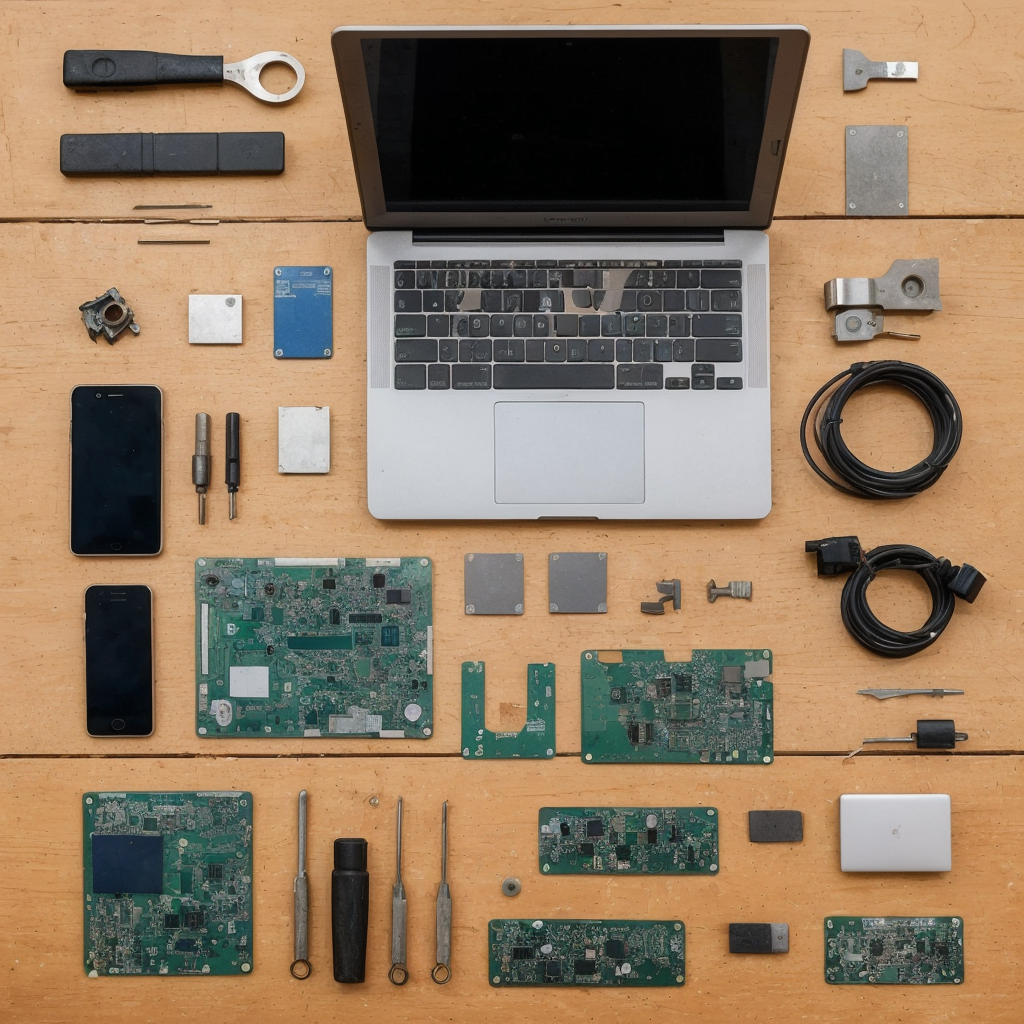The staggering statistic that 800 laptops are discarded every second, contributing to the annual production of 40 million tons of electronic waste (e-waste) globally, highlights a critical environmental challenge. The shift from a replace to a repair mindset presents a viable solution to this escalating problem, offering both environmental and economic benefits. How Repairing Instead of Replacing Can Make a Difference: Reduces E-Waste: Repairing electronic devices like laptops, smartphones, and tablets extends their lifespan, significantly decreasing the volume of e-waste generated. By fixing existing devices, we prevent them from ending up in landfills where they contribute to pollution and toxic waste.
Conserves Resources: Manufacturing new electronics requires substantial amounts of raw materials and energy. Repairing devices minimises the demand for new products, thereby reducing the extraction of precious metals and other resources, and lowering the carbon footprint associated with production and distribution processes.
Promotes a Circular Economy: A repair-centric approach encourages a circular economy, where products are designed to be repaired and reused rather than disposed of. This model fosters sustainability by keeping electronics in use for as long as possible, maximising their value and minimising environmental impact.
Saves Money: For consumers, repairing a device is often more cost-effective than purchasing a new one. This economic incentive can encourage individuals and businesses to opt for repairs, contributing to a decrease in e-waste.
Creates Jobs: The repair industry has the potential to create a significant number of skilled jobs, contributing to economic growth while promoting sustainable practices.
Raises Awareness: Focusing on repairs highlights the importance of sustainability and responsible consumption. It can lead to more consumers demanding durable, repairable products, pushing manufacturers to design devices that are easier to fix and recycle.
In conclusion, embracing repair over replacement is a critical step towards solving the e-waste crisis. It not only addresses the immediate issue of reducing waste but also encourages a broader shift towards more sustainable and responsible consumption patterns. Companies like Repatch, which facilitate easy and accessible repairs, are at the forefront of this movement, offering practical solutions that benefit both the planet and the people.


